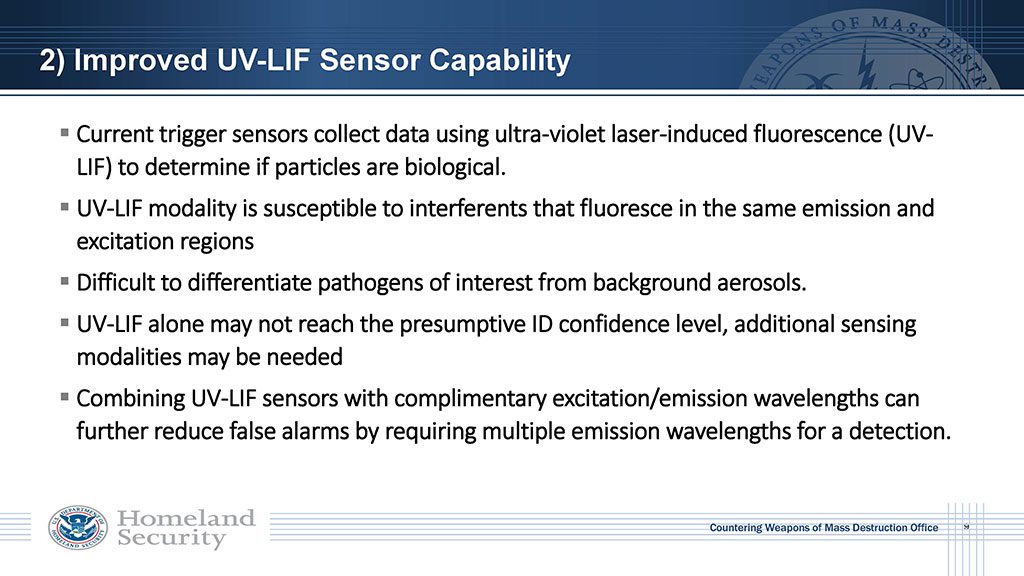DHS CWMD is leading an effort to develop the next-generation of aerosol biodetection systems
RFIs open for Advanced Sensor Redesign and UV-LIF Trigger Redesign
The Department of Homeland Security CWMD Research & Development division is seeking information from contractors capable of supporting its requirements for the development of more affordable aerosol biosensors that operate and alert in real time and are capable of detecting and characterizing or identifying biological agents in operational environments.
The Biodefense for the 21st Century (BD21) program is working to design, develop, and deploy networked detection systems that continuously monitor the air, collect real-time data, and employ data analytics to detect anomalies. The faster anomalies are detected, the faster first responders can address potential threats.
The BD21 Program Management Office has identified the need for further research and development of commercially available biological detection and presumptive identification technologies to enable timely detection and characterization of airborne bio-threats.
The DHS CWMD office intends to deploy biosensors in both indoor and outdoor urban environments to conduct real-time monitoring of biological threats and seeks industry to continue research and development efforts in order to meet characterization and cost goals. The redesign of the commercially available biosensors is being proposed to occur over 15 months and will take place in 2 phases, to include: the design of at least 2 prototypes that will be tested by the performer followed by an opportunity for a prototype redesign before delivering the final prototypes to the government for an independent operational background test and chamber test.
Minimum requirements for the sensors include:
- Capable of accurately detecting and classifying Category A and B biological agents in environmental aerosols with varying levels of background particles.
- Capable of continuous monitoring of aerosols.
- Capable of sending alerts to an operator after detection, characterization and/or preliminary identification within a maximum time of 30 minutes.
- Ability to differentiate between biological and non-biological particles while rejecting benign particles that are common interferents such as brake dust and diesel smoke.
- Sensors must be capable of classification of biological particles to a Kingdom level at minimum (bacteria, virus, toxin, spore).
- Sensor differentiation of particles should reduce false alarms in urban operational environments to a level of < 3 alarms/day.
- Sensors must be capable of detecting down to a 1um particle size at concentrations relevant to a 3kg (threshold), 0.5kg (objective) times aerosolized release based on biological particle type.
Select background slides from the 18 March 2021 BD21 Virtual Industry Day:









Contractors shall deliver two instruments of the same version for each of the of development prototype phases. The government anticipates the sensors per unit cost will be between $125K (threshold) and $65K (objective).
Additional details are available at SAM.gov Notice ID: 70RWMD21RFI00000011 and 70RWMD21RFI00000012. The current response deadline is Sep 16, 2021.


